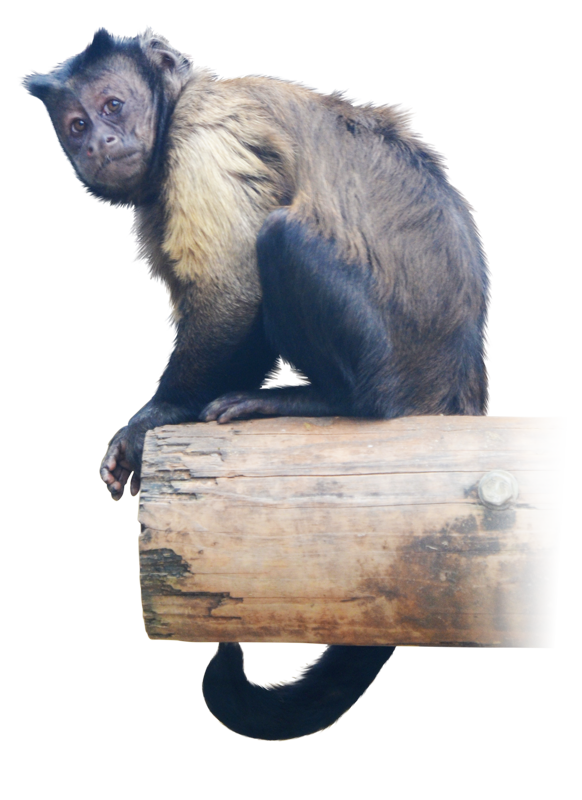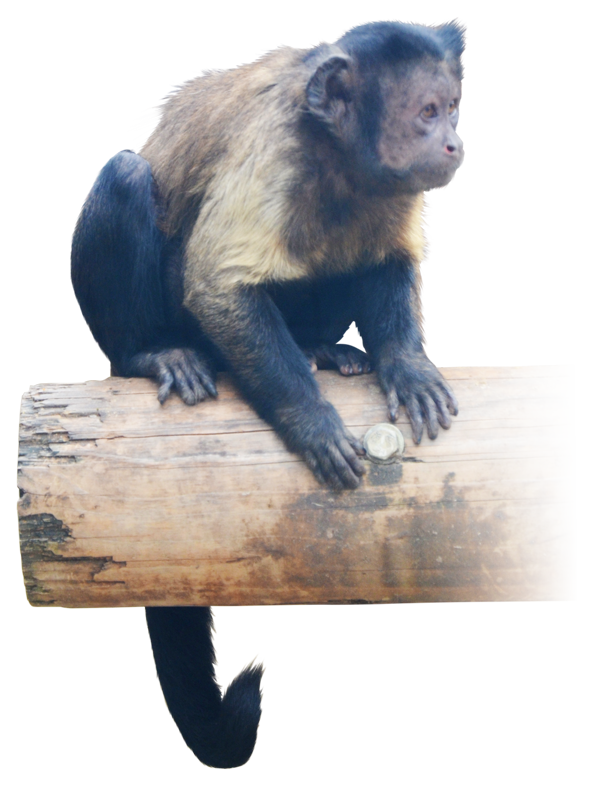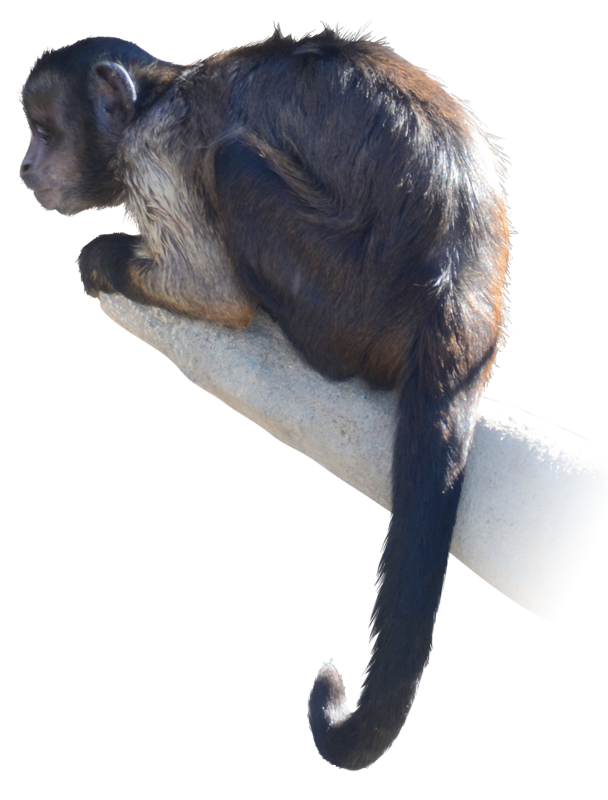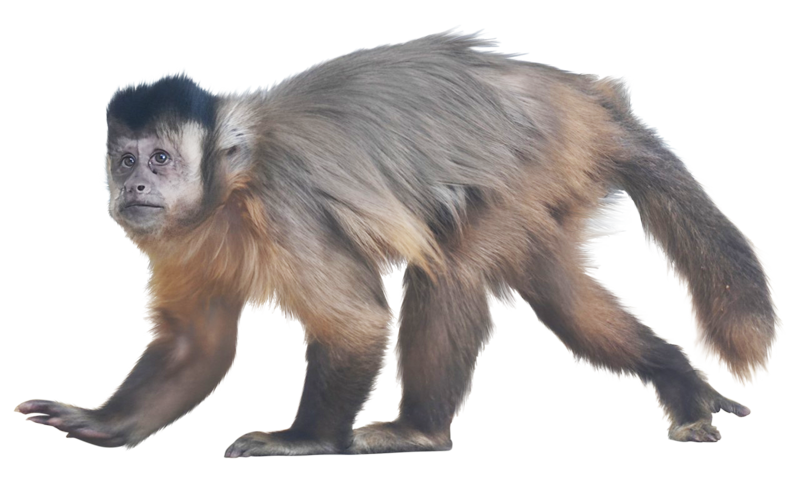
Cebus apella (Linnaeus, 1758)
アマゾンの賢い修道士
The Clever Monk of the Amazon
アマゾン川下流域に生息します。体長30~56cm、尾長35~56cm、体重2~4kgで、オスの方がメスよりも大型です。英名の「Tufted」は頭部の暗色の房毛を指し、「Capuchin」はフランシスコ会の修道会であるカプチン会に由来します。修道士が茶色のフード付きローブを着た姿に似ていることから、この名がつけられました。
雑食性で、昆虫や果実、種子、花、葉などを食べます。ほかの果実食霊長類が利用しにくい硬い果実や、競合の少ない果実を選ぶ傾向があり、競合回避の戦略をもつと考えられています。主に森林で暮らし、小規模な群れを形成しますが、時には他種のサルと混群をつくることもあります。危険を感じると、口笛のような声を上げて威嚇します。
新世界ザルの中では最も知能が高く、「南米のチンパンジー」とも呼ばれます。クルミなどの硬いナッツを木や石に打ちつけて割ったり、容器で水をためたり、ストローを使ってジュースを飲むなど、簡単な道具を使うことができます。その賢さや器用さから、アメリカでは介護補助に利用されることもあります。
短時間ながら二足歩行をすることがあり、ナッツを割る際の姿勢や筋肉の動きを調べた研究では、この動作が直立姿勢の発達に関係していることが示されました。これは、人類が二足歩行へと進化する過程を考えるうえで重要な示唆を与えています。
The tufted capuchin inhabits the lower Amazon Basin. Its body length ranges from 30 to 56 cm, with a tail length of 35 to 56 cm and a weight of 2 to 4 kg. Males are generally larger than females. The English name “tufted” refers to the dark tufts of hair on the head, while “capuchin” comes from the Capuchin friars of the Franciscan order. The name was inspired by the monks’ brown hooded robes, which resemble the monkey’s appearance.
The species is omnivorous, feeding on insects, fruits, seeds, flowers, and leaves. It tends to exploit hard fruits and other resources that are difficult for other frugivorous primates to use, suggesting a strategy to avoid competition. Tufted capuchins mainly live in forests, forming small social groups, and sometimes associate with other monkey species to form mixed groups. When alarmed, they emit a whistle-like call to warn or intimidate intruders.
Among New World monkeys, the tufted capuchin is considered the most intelligent and is often called the “chimpanzee of South America.” It is known to use simple tools—cracking hard nuts by striking them against trees or stones, storing water in containers, and even drinking juice through a straw. Because of their intelligence and dexterity, some have been trained to assist people with disabilities in the United States.
Although they occasionally walk on two legs for short periods, studies of their posture and muscle movement during nut-cracking suggest that this behavior may have influenced the development of upright posture. Such findings provide valuable insights into the evolutionary origins of human bipedalism.
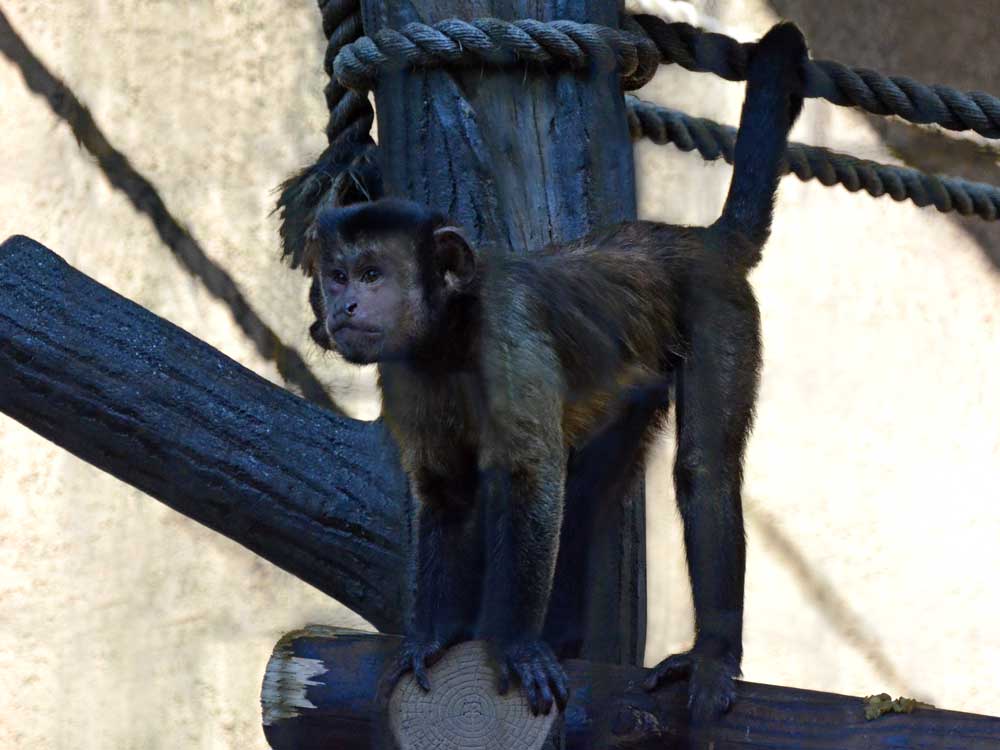
参考文献
Simpson, K / Izar, P / Ottoni, E / Visalberghi, E / Fragaszy, D. Kinematics and energetics of nut-cracking in wild capuchin monkeys (Cebus libidinosus) in Piauí, Brazil. (2009, January 2) 2024年7月15日閲覧
おさるランド&アニタウン | 介護猿としても知られる最も知能が高いサル!?フサオマキザルについて解説 | (2021年月09日16日) 2024年7月15日閲覧
“Capuchin” (2024, May 27), AZ Animals. 2025年11月1日閲覧
“Tufted capuchin”, Primate Factsheets and Resources, Wisconsin National Primate Research Center. 2025年11月1日閲覧
